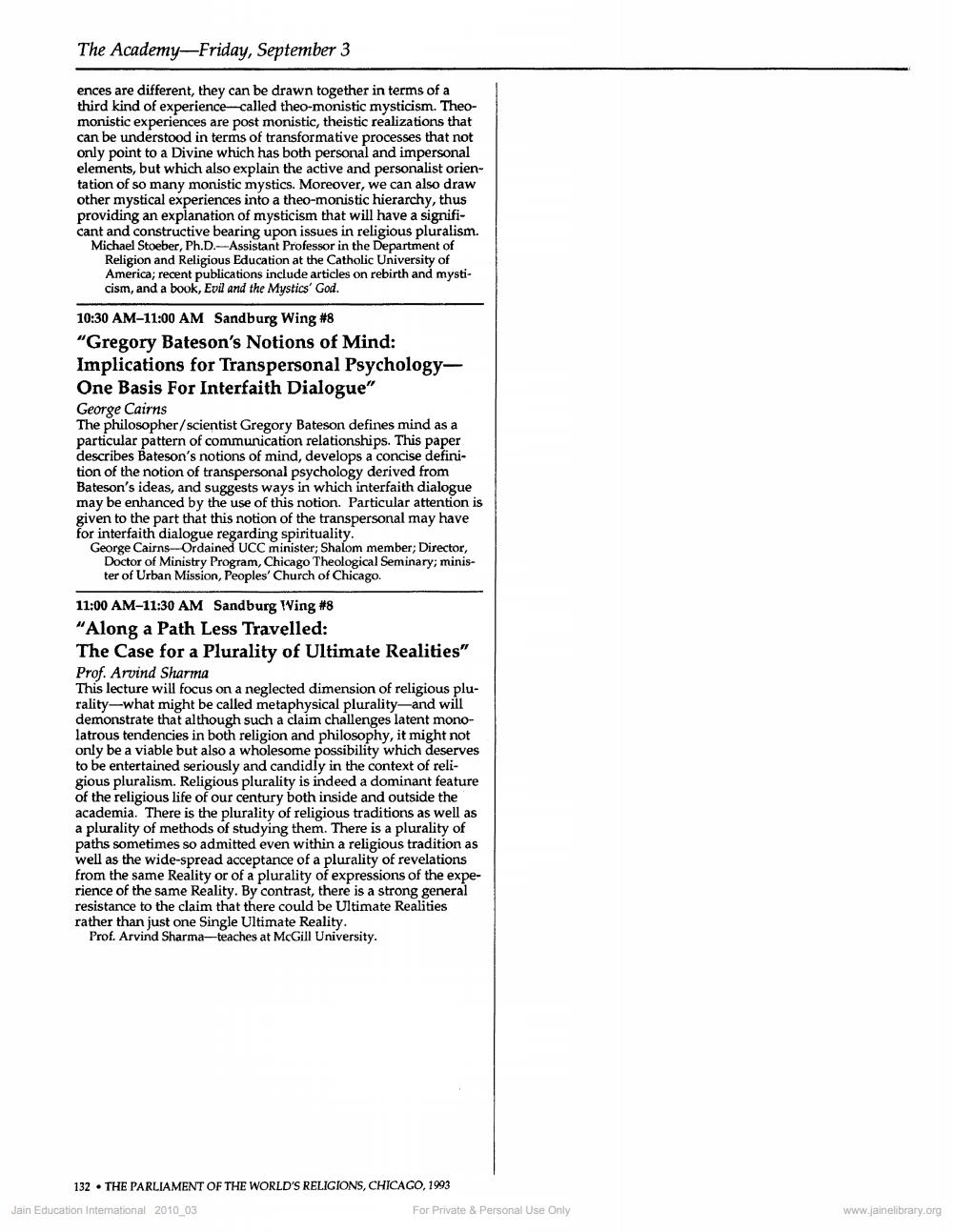________________
The Academy-Friday, September 3
ences are different, they can be drawn together in terms of a third kind of experience called theo-monistic mysticism. Theomonistic experiences are post monistic, theistic realizations that can be understood in terms of transformative processes that not only point to a Divine which has both personal and impersonal elements, but which also explain the active and personalist orientation of so many monistic mystics. Moreover, we can also draw other mystical experiences into a theo-monistic hierarchy, thus providing an explanation of mysticism that will have a significant and constructive bearing upon issues in religious pluralism. Michael Stoeber, Ph.D.-Assistant Professor in the Department of
Religion and Religious Education at the Catholic University of America; recent publications include articles on rebirth and mysticism, and a book, Evil and the Mystics' God.
10:30 AM-11:00 AM Sandburg Wing #8 "Gregory Bateson's Notions of Mind: Implications for Transpersonal PsychologyOne Basis For Interfaith Dialogue" George Cairns
The philosopher/scientist Gregory Bateson defines mind as a particular pattern of communication relationships. This paper describes Bateson's notions of mind, develops a concise definition of the notion of transpersonal psychology derived from Bateson's ideas, and suggests ways in which interfaith dialogue may be enhanced by the use of this notion. Particular attention is given to the part that this notion of the transpersonal may have for interfaith dialogue regarding spirituality.
George Cairns-Ordained UCC minister; Shalom member; Director, Doctor of Ministry Program, Chicago Theological Seminary; minister of Urban Mission, Peoples' Church of Chicago.
11:00 AM-11:30 AM Sandburg Wing #8
"Along a Path Less Travelled:
The Case for a Plurality of Ultimate Realities" Prof. Arvind Sharma
This lecture will focus on a neglected dimension of religious plurality-what might be called metaphysical plurality-and will demonstrate that although such a claim challenges latent monolatrous tendencies in both religion and philosophy, it might not only be a viable but also a wholesome possibility which deserves to be entertained seriously and candidly in the context of religious pluralism. Religious plurality is indeed a dominant feature of the religious life of our century both inside and outside the academia. There is the plurality of religious traditions as well as a plurality of methods of studying them. There is a plurality of paths sometimes so admitted even within a religious tradition as well as the wide-spread acceptance of a plurality of revelations from the same Reality or of a plurality of expressions of the experience of the same Reality. By contrast, there is a strong general resistance to the claim that there could be Ultimate Realities rather than just one Single Ultimate Reality.
Prof. Arvind Sharma-teaches at McGill University.
132. THE PARLIAMENT OF THE WORLD'S RELIGIONS, CHICAGO, 1993
Jain Education International 2010_03
For Private & Personal Use Only
www.jainelibrary.org




